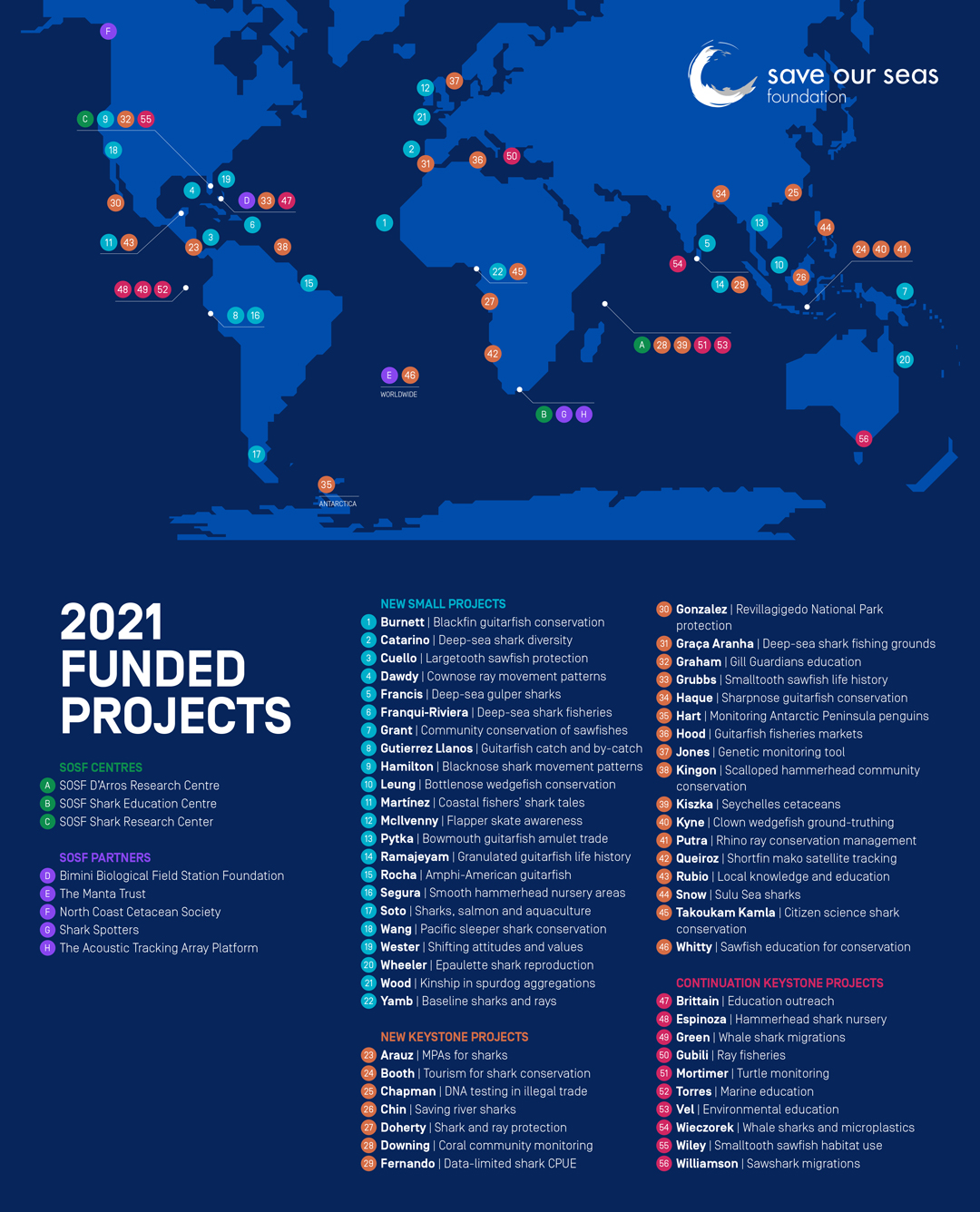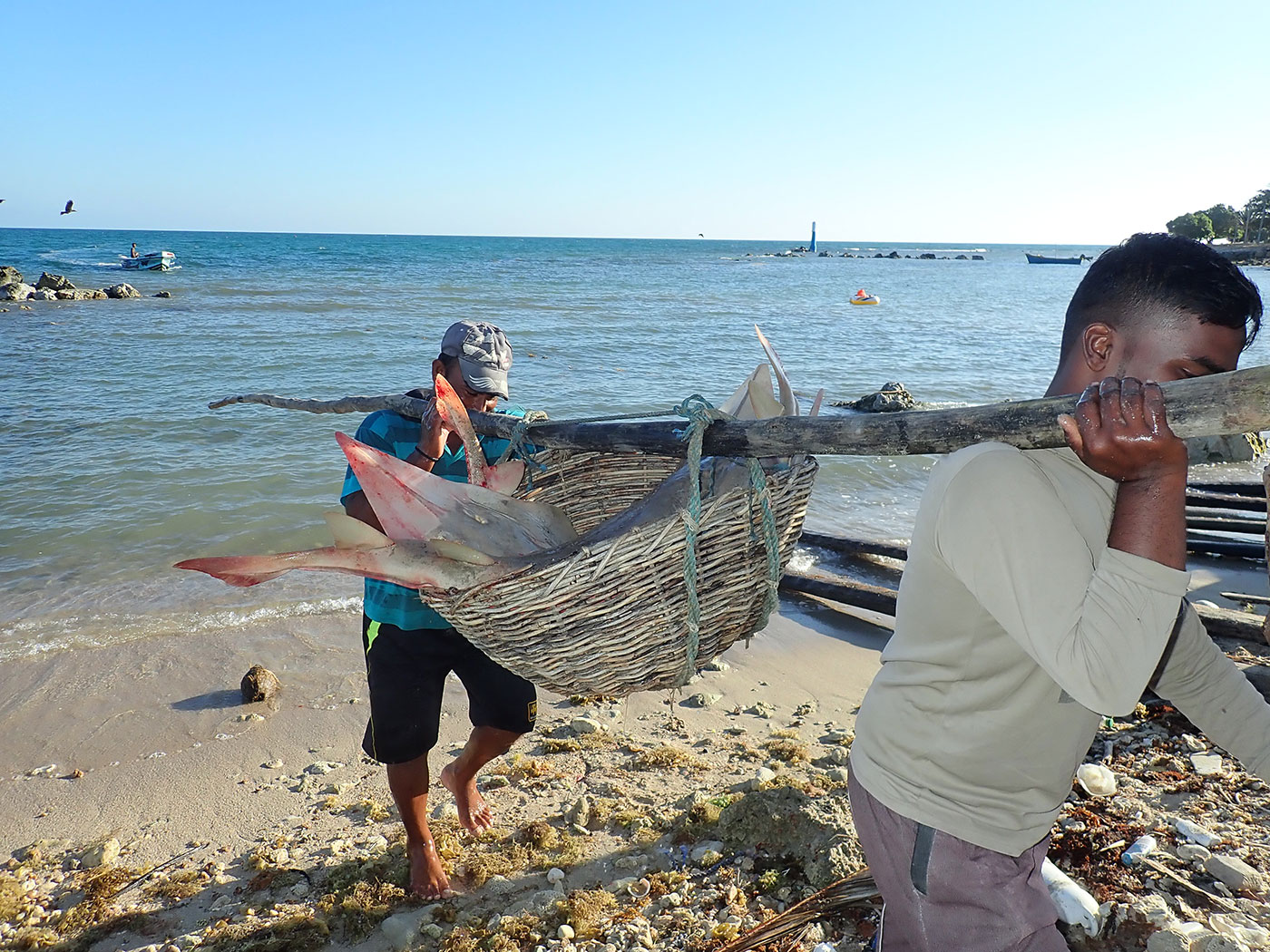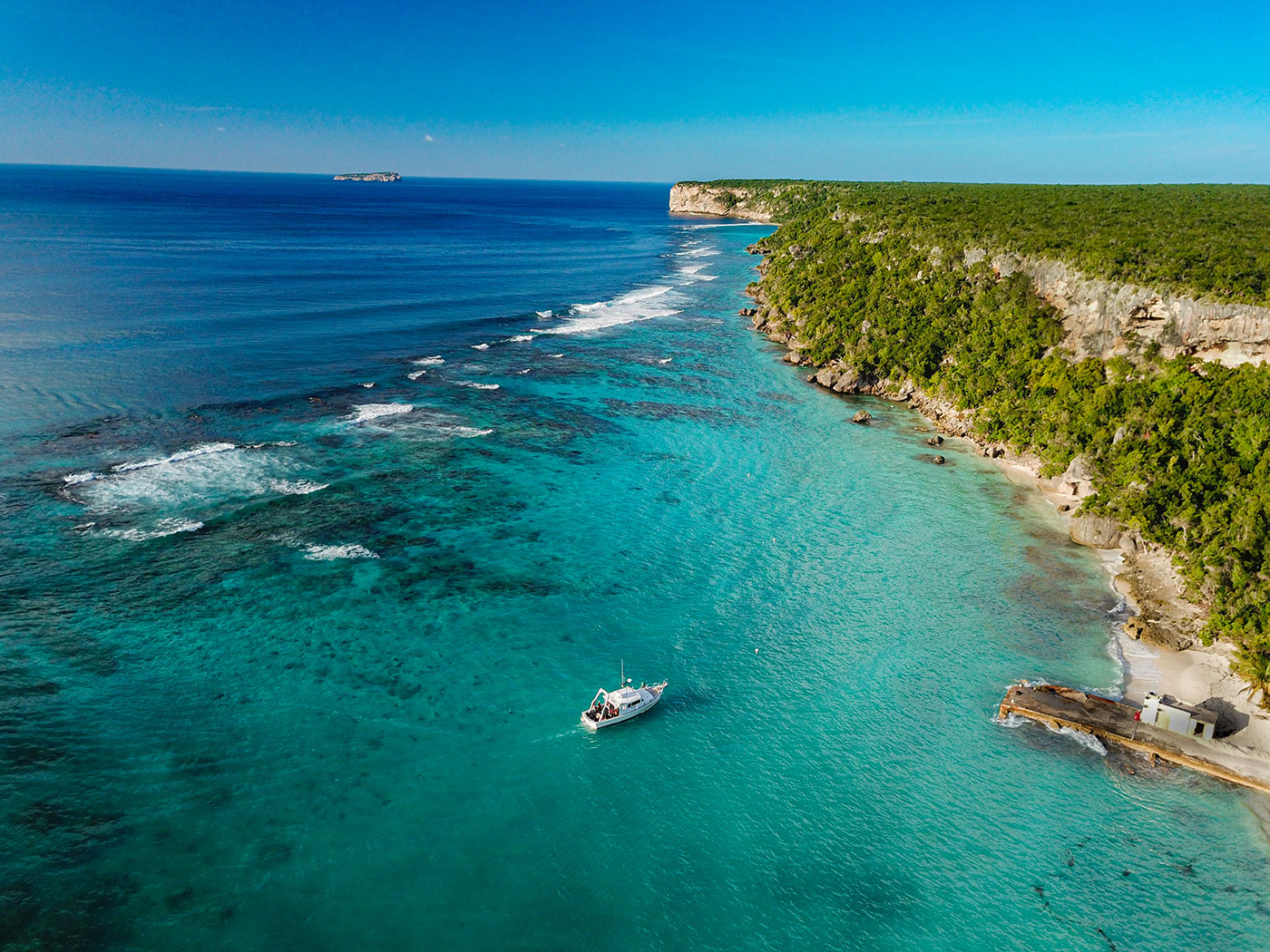2021 Small Grants
To protect life in our oceans, especially sharks and rays, the Save Our Seas Foundation has expanded its support of global marine research, conservation, and education initiatives. These Small Grant projects belong to early-career scientists and are aimed at generating critical knowledge on marine species and their habitats.
Explore these innovative collaborations below:
Amanda Jhu Xhin Leung is doing DNA analyses to clarify the genetic structure of bottlenose wedgefish (also called whitespotted wedgefish), and her project aims to determine the local population structure and fishery threats of this species in Malaysia.
Ashley Mackenzie Dawdy catches cownose rays to tag them with an acoustic transmitter and uses the network of listening stations established in her research area to passively track where the rays move through their different life stages.
Blake Hamilton’s project, which is a collaboration with NOAA Southeast Fisheries Science Center’s Gulf of Mexico Shark Pupping and Nursery Area Survey, aims to identify important habitats for baby coastal sharks. Blake’s focus is on blacknose sharks in the Florida Keys and Florida Bay, which is an area of overlap in the distribution of the Gulf and Atlantic populations.
Carolyn Wheeler is interested in the potential impact of rising ocean temperatures on the ability of epaulette sharks to successfully reproduce. Her work to date has already investigated how higher temperatures might affect the development of the embryos and hatchlings of these small, egg-laying sharks found across Australia’s Great Barrier Reef.
Diana Catarino is diving deep into the waters of the Azores to find non-harmful ways to document the diversity and abundance of deep-water sharks.
Ebeena Francis is uncovering new information about the abundance and diversity of gulper sharks. Her focus is on three landing sites where deep-sea fish are brought ashore, and where she collects tissue samples and documents bycatch from these fisheries.
Eduardo Segura’s project will be running stable isotope analyses to understand what baby hammerhead sharks are eating and how they are using different habitats.
Fabio David Cuello Mercado is working for mangroves and towards an MPA by restoring native species, collecting plastic waste, and demarcating important coastal areas. All this, in a bid to bring to life a comprehensive strategy to save largetooth sawfish off the coast of Colombia.
Fenella Wood is studying Scotland’s spurdogs, a small shark found across the British Isles and temperate regions worldwide. While commercial targeting of spurdogs has been banned after major population declines, whole aggregations can be caught as bycatch.
Fernanda Rocha is using genetic samples of guitarfishes to disentangle the life histories and genetics of the nine different species found around the Americas and the Caribbean.
Glorimar Franqui-Rivera gathers baseline information on which sharks and rays are being caught and consumed in Puerto Rico’s fisheries as there is little information on where sharks and rays are found in this region and their diversity and how they are fished.
Heidi McIlvenny trains volunteer sea-anglers to tag sharks, skates, and rays around Northern Ireland. She also communicates the data collected by these anglers with government departments to inform more conservation measures for endangered Irish sharks.
Ilse Martínez is working with fishers of the largest coastal lagoon in southeast Mexico. Terminos Lagoon is located in the state of Campeche, in the Yucatán Peninsula, and has a fishing history dating back to the Mayans.
Jeff Whitty is on a mission to create high-quality and accurate education materials in at least six languages that will create awareness around all five species of sawfish.
Jennifer Pytka’s research will start in the world’s busiest amulet market of Tha Prachan in Bangkok. From there, she’ll be tracing trade and supply chain routes through other markets and ports to glean information from local traders and fishers.
Joaquín Soto’s love of time at sea and enthusiasm for working with fishers come in handy for his project. He collaborates with local fishers to collect shark stomach and muscle samples in southern Chile’s marine waters.
Julia Wester wants to help sharks and rays in Biscayne Bay, a marine estuary on south Florida’s coast. She wants to understand what people already know and value about the bay and learn how to best approach them to drive change.
Although most of Kirsti Ann Burnett’s work is lab-based in Germany, she’s building a reference genome (all the genetic material for the species) for Cabo Verde’s blackchin guitarfish.
Lionel Yamb is gaining insights into Cameroon’s sharks and their conservation status. His focus lies on the country’s north coast, a stretch that runs for more than 160 km at the foot of Mount Cameroon, central Africa’s highest mountain and an active volcano.
Mercedes Elizabeth Gutierrez Llanos is visiting the ports and fish landing sites of 12 ports in Peru. She measures, records, and collects samples as the fishers unload their catches while searching for guitarfishes.
Michael Grant is dedicated to the conservation of Papua New Guinea’s sawfishes and providing materials for children to understand their incredible natural inheritance.
Mike Wang’s idea for satellite tagging Pacific sleeper sharks came about while working on a larger project to find better ways to harvest local swordfish around San Diego, California.
Ramajeyam Gobiraj is the lead researcher of the Sri Lanka Elasmobranch Project along the country’s north and east coasts.




